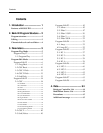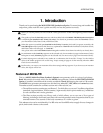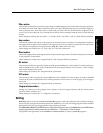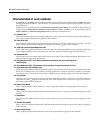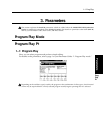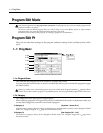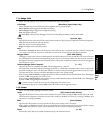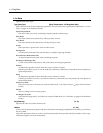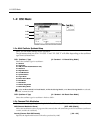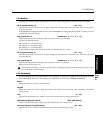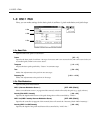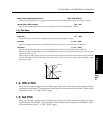
1–1e: Scale
Specifies the scale type
Type (Scale Type) [Equal Temperament…All Range User Scale]
Selects the basic scale for the internal tone generator. The user scales can be specified in Global mode “3-1: User
Scale” (
☞
page 127 in Parameter Guide).
Equal Temperament
The most widely used scale, consisting of equally-spaced semitone steps.
Pure Major
The major chords of the selected key will be perfectly in tune.
Pure Minor
The minor chords of the selected key will be perfectly in tune.
Arabic
This reproduces a quarter-tone scale of Arabic music.
Pythagorean
A scale based on ancient Greek musical theory, suitable for playing melodies.
Werckmeister (Werkmeister III)
An equal-tempered scale used in the later Baroque period.
Kirnberger (Kirnberger III)
A scale created in the 18th century, and used mainly for tuning harpsichords.
Slendro
An Indonesian gamelan scale in which the octave consists of 5 notes.
If the Key parameter is set to C, use the C, D, F, G, and A keys. (Other keys will produce the same pitches as
equal temperament.)
Pelog
An Indonesian gamelan scale in which the octave consists of 7 notes.
If the Key parameter is set to C, use only the white keys. (The black keys will produce the same pitches as
equal temperament.)
Octave User Scale
This is the one-octave scale that you create in Global mode “3-1b: Octave Notes” (
☞
page 127 in Parameter
Guide).
Stretch
This is a tuning used on acoustic pianos.
All Range User Scale
This is the full-range scale (C-1=G9) that you create in Global mode “3-1a: All Notes” (
☞
page 127 in Parameter
Guide).
Key (Scale Key) [C…B]
Specifies the tonic note of the selected scale.
Random [0…99]
As this value is increased, the pitch of the note will become increasingly unpredictable. Normally you will leave
this set at zero.
Adjust this parameter when you wish to simulate instruments whose pitch is naturally unstable, such as tape-
mechanism organs or acoustic instruments.
1-1: Prog Basic



